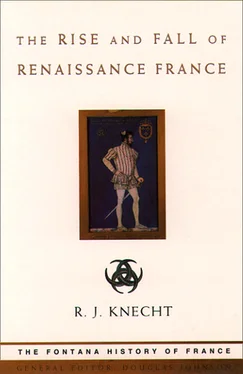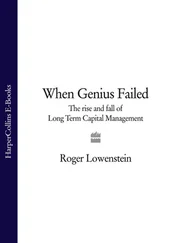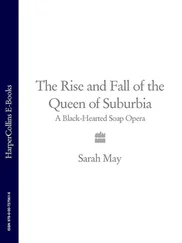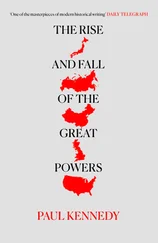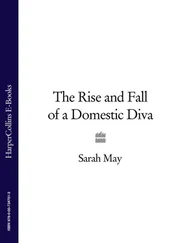His conscience was not, it seems, untroubled. In 1483 he had solemnly promised to marry Margaret of Austria, the daughter of Maximilian, and he was afraid that his breach of promise might stain his honour as head of the knightly Order of St Michael. What is more, he seems to have had tender feelings for the princess, who reciprocated them. She wept bitterly on hearing of the king’s marriage and kept his portrait for the rest of her life. When she eventually left France he gave her a valuable chain symbolizing eternal friendship. Another source of anxiety for Charles was the proxy marriage between Anne and Maximilian. Theologians were divided on its validity, though all agreed that an unconsummated marriage could easily be annulled by the church. The necessary dispensation was obtained without difficulty from Pope Innocent VIII.
Charles VIII and Anne of Brittany were married at the chateâu of Langeais on 6 December 1491. Both parties renounced their rights of ownership in Brittany. If Charles predeceased Anne, she was to remarry his successor. If he died without male issue, she was to regain possession of her duchy. On 4 January a Milanese diplomat reported from the French court: ‘There is no sign of rejoicing over this marriage on the part of the king or anyone else.’ Yet Bretons and Frenchmen were evidently pleased to see an end to their conflicts. Anne was welcomed by her French subjects, though doubts regarding the validity of her marriage were not immediately dispelled. They were confirmed by the accidental death of Dunois, one of its architects, shortly before it took place. Doubts were also to be raised by the premature deaths of children born of the marriage.
The Breton marriage, which effectively destroyed Brittany’s independence of France, was naturally viewed with concern by France’s neighbours. However, Maximilian was too preoccupied in central Europe to react forcefully. He was, it seems, far more irritated by the slowness with which the French returned Margaret of Austria and her dowry than by the overthrow of his own Breton marriage. Instead of resorting to arms, he tried to turn international opinion against Charles by branding him as an adulterer. Ferdinand of Aragon also was too busy besieging Granada to react strongly to the Franco-Breton marriage. He gladly accepted an offer from Charles to open serious talks on the future of Roussillon. By contrast, Henry VII of England protested at the marriage and assembled a fleet, but, as a French observer pointed out, this did not necessarily presage an English invasion of France.
In 1492 and 1493, Charles VIII signed three important treaties with neighbouring powers in which he gave away some territories and rights. Historians have commonly assumed that these sacrifices were intended to clear the path for his invasion of Italy in 1494. This explanation, however, may be too simple. While the treaties may have contributed to a European peace essential to the launch of Charles VIII’s campaign, they were concerned with problems unconnected with Italy.
In January 1491, soon after his marriage with Anne of Brittany, Charles VIII disbanded his army in the duchy. This was as much for financial as for political reasons: the Breton wars had been a heavy drain on his resources. Only by periodically appealing to the generosity of the ‘good towns’ had he been able to keep the taille at a constant level since 1489 (i.e. 2,300,000 livres per annum). Yet England continued to threaten French security. In the autumn of 1491, Henry VII announced his intention of asserting his claim to the French crown and persuaded Parliament to vote him subsidies. During the following summer an English invasion of northern France seemed imminent. Charles reluctantly levied a crue de taille and again called on the ‘good towns’ to help. On 2 October, Henry VII landed at Calais with a large army and soon afterwards laid siege to Boulogne; but the campaigning season was almost over and it soon became clear that the king had come to bargain, not to fight. He was fortunate to find Charles similarly disposed. On 3 November they signed the Peace of Etaples, the first perpetual peace between England and France since the Hundred Years War. In 1478, France had agreed to pay England an annual pension of 50,000 gold écus for the lifetime of the signatories and for a hundred years after the death of either of them. This pension had lapsed on the death of Louis XI so that France owed England 450,000 écus in 1492. This matter was now settled to France’s advantage. She agreed to pay 750,000 gold écus in twice-yearly instalments of 25,000 écus and her obligation to pay a tribute over a much longer period than fifteen years was dropped. All of this was in addition to an earlier undertaking by Charles to settle his wife’s English debt of 620,000 gold crowns.
Though expensive, the Treaty of Etaples was beneficial to France. Apart from its financial provisions, which represented a reduction of the burden incurred in 1478, it entailed no loss of French territory. The settlement of Brittany’s English debt freed the duchy’s towns that had served as securities for this debt, while denying Henry VII any pretext for intervention in Brittany’s affairs. In the words of an English historian: ‘The treaty of Etaples was a major setback to English interests. Brittany’s independence was gone. The entire southern shore of the Channel, except for Calais, had become French.’
On 3 November 1492, Charles VIII informed the inhabitants of Perpignan of his intention to hand back Roussillon and Cerdagne to Spain. His move may have been prompted by his father’s deathbed wish that the two counties, which he had seized unlawfully in 1463, should be restored to their rightful owner. Spanish prestige was riding high at the French court in 1492 following the conquest of Granada by Ferdinand and Isabella. Yet negotiations between France and Spain dragged on into the autumn and, losing patience, Ferdinand urged his allies Henry VII and Maximilian to invade France. It was partly to avert the danger of a triple invasion that Charles concluded the Treaty of Barcelona on 19 January 1493. The perpetual alliance between France and Castile was renewed and given precedence over all other treaties entered upon by the parties, save with the Holy See. No marriage was to be arranged between the children of the Catholic Kings and any of France’s enemies without her permission. Roussillon and Cerdagne were ceded to Spain without prejudice to the rights and claims of future kings of France. The Catholic Kings did not promise to remain neutral in the event of a French invasion of Naples. Such a commitment was requested by Charles VIII in March 1493 and conceded in August; it was additional to the treaty, not part of it.
The King of the Romans was displeased by the treaties of Etaples and Barcelona. In December 1492 he claimed the whole of his Burgundian inheritance and invaded Franche-Comté. He did not advance into the Lyonnais, however, and in March 1493 agreed to negotiate with France. The upshot was the Treaty of Senlis, published on 23 May. Charles promised to return Margaret of Austria to her father and the bulk of her dowry, including Artois and Franche-Comté, to her brother, the archduke Philip. The king retained the county of Auxonne and provisionally Hesdin, Aire, Béthune and Arras. These towns, except Arras, were to be returned to Philip on his twentieth birthday (23 June 1498). A court of arbitration was to decide who owned the counties of Mâcon, Auxerre and Bar-sur-Seine. The treaty was completed by clauses guaranteeing freedom of trade and restoring property lost in the wars since 1470. An important aspect of the treaty was the implicit recognition of the marriage of Charles VIII and Anne of Brittany. The Treaty of Senlis, like that of Barcelona, contained no agreement in respect of a future French intervention in southern Italy. Maximilian did allow Charles VIII a free hand in Naples, but this was not part of the treaty which was mainly prompted by the need to regularize Margaret of Austria’s position in the wake of the Franco-Breton marriage. However, it did not solve all the issues dividing the parties. Neither Maximilian nor Margaret ever forgot that Burgundy was the cradle of Charles the Bold’s power. All their efforts were later directed towards its reconquest, but, as long as Charles VIII was alive, Burgundy was not seriously threatened. The Peace of Senlis gave France five years of peace on her eastern frontier.
Читать дальше
